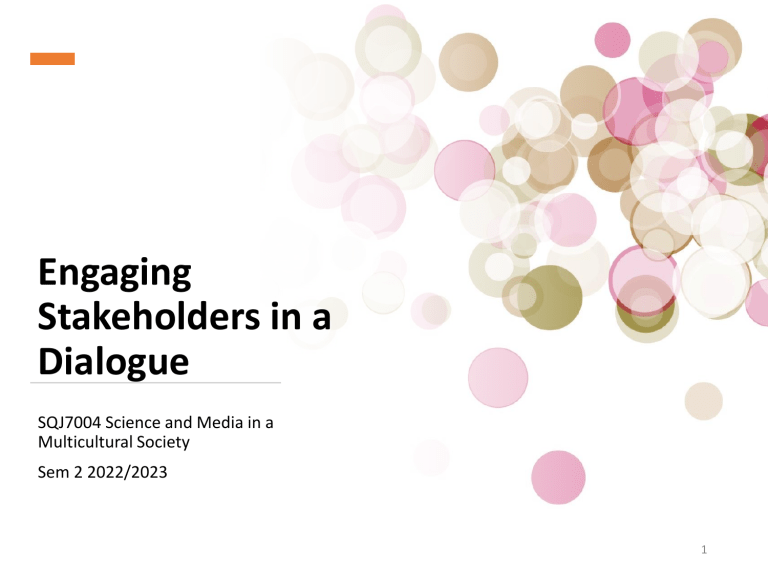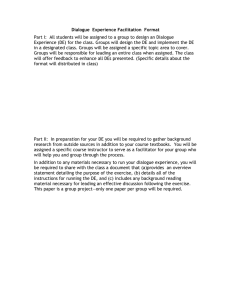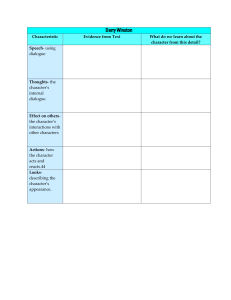
Engaging Stakeholders in a Dialogue SQJ7004 Science and Media in a Multicultural Society Sem 2 2022/2023 1 What is dialogue • derived from the origin of the Greek word; dialogos (dia= through, logos= word/ meaning; sharing of meaning through conversation. • communication methodology which values - mutual listening, understanding and respect - collaborative ‘group intelligence’ over individual thinking - inclusiveness and equality • all participants feel free to speak openly, everyone is valued and respected. 2 Differences between dialogue, debate and deliberation 3 Dialogic turn in science communication 4 Science communication as social conversation of science Bucchi & Trench 2021 5 Importance of dialogue Researchers may have many reasons to engage with various stakeholders and the wider public: • To gain other points of view as input or inspiration for their research • To build a wider understanding of and support for their work • To hear and potentially respond to any concerns in the hope of averting opposition • To address or resolve social and ethical issues raised by their research. 6 (Weingart et al. 2021) 7 Planning and preparing for a dialogue 8 Designing and planning the process • How ambitious is your aim? • How in-depth or complex is the input you need? • How sensitive is the issue? The dialogic process may be a single event or activity, day-long or shorter, or a series of events or activities, eg a series of workshops with information gathering and reflection taking place in between. 9 • Materials to prepare: - Background research: Who should be involved, their background, opinions of the stakeholders about the issues - Framework: e.g Aims, key issues to be addressed, questions-openended/ encouraging/ clarifying - Protocols: e.g technique used, logistics, participants’ need - A brief: Information for the participants - Evaluation method 10 Dialogue technique • Panel session • Small group discussion • Carousel • Buzz • Role play • Future visioning • Thinking hats 11 Ground rules for dialogue • Everyone has something to contribute- encourage participants to speak • Give everyone space to speak; ‘one voice at a time’ • Listen actively to what everyone has to say- try to understand not only the words but also the feelings, use verbal and nonverbal ways to signal this • Make your points concisely, and don’t let yourself or others dominate the discussion • Respect different views; try to understand one another better, not to judge or impose your views. • People have the right to be silent, but not to be silenced. 12 Role of facilitators: • to help the group meet the aims of the discussion as fully as possible in the time available • to encourage the fullest possible participation of the group • To be impartial on the topic under discussion 13 Barriers to effective dialogue Divides in lay-expert encounter: - Knowledge imbalances - Educational and confidence imbalances - Differing experiences and perspectives 14 SPECTRUM activity- forum: By using an issue/ topic as an example, explain the challenges in engaging multicultural society in a dialogue 15 • Presentation of proposal draft • Submission of proposal (Week 7: 5/5/2023) 16



